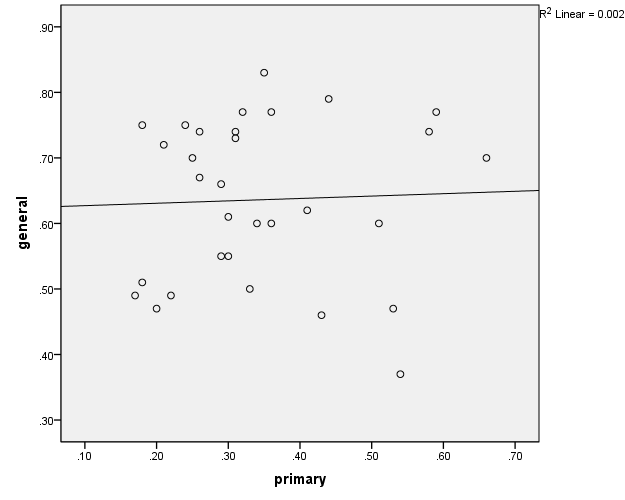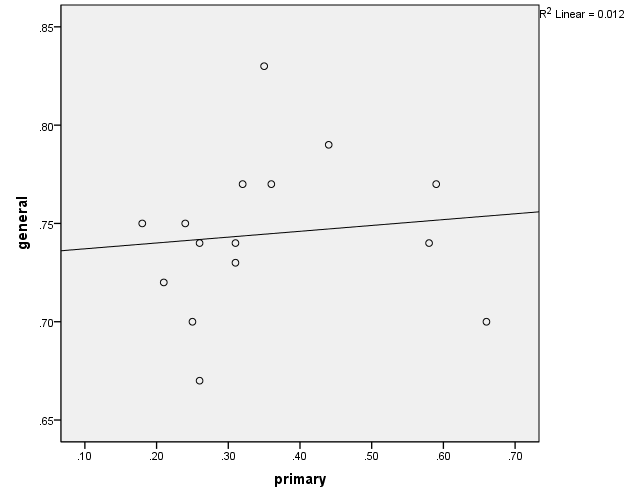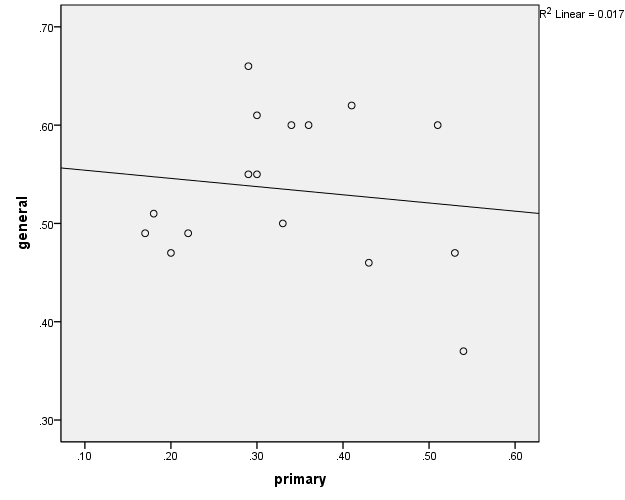
by Alex Patton | Jan 23, 2020 | Political Research
Some weekend projects start with a simple question, this past weekend was no different.
“How much churn is there in Florida’s voter file?”
We wanted to get a sense of how much churn was in the voter file leading up to the 2020 election. We took the voterfile from Jan 2019 and compared it to the voterfile in December of 2019. (We went county by county using the R library CRAN compareDF) For the period of 2019, we wanted to explore how many records changed, how many were added, and how many were removed.
In the aggregate, it would appear there isn’t much churn or turnover in the voterfile. The number of registered voters grew about 2% for the year. However, that masks the story.
On average, 7% of the voters had changes in their data (this can be anything from switching parties, address changes, having the precinct number change, etc), 7% were additions, and 5% were removed during that time.
In 2020, Florida added 979,146 voters and removed 741,312 voters.
But my take away is this – remember there are differences in macro- behavior and micro-behavior – and macro level changes maybe masking much larger micro-shifts.
Below are the county breakdowns, some of the counties that exhibit high percentages of change were shifting / changing precinct numbers.
[table id=13 /]

by Alex Patton | Aug 20, 2019 | Political Consulting
I have written about political scandal before, but that research seems outdated in today’s political landscape.
Today’s landscape seems bi-polar. Sometime scandal will drive people from office to resign in shame- Sen Franken, Gov Sanford – while other times it just doesn’t POTUS, Gov Northam, Roy Moore.
Where is the line? I am not sure I can answer that, but I did come across a study by Dona-Gene Mitchell in Political Psychology entitled: “Here Today, Gone Tomorrow? Assessing How Timing and Repetition of Scandal Information Affects Candidate Evaluations” (someone on twitter linked to it, and for the life of me I can’t remember who – but I thank them.)
We remember from other blog posts, voters remember negative information more easily and weigh it more heavily.
This specific study uses a panel experiment to look at timing effects. It is an interesting study, but the main criticism is that it assumes media coverage.
Frankly, with today’s state of journalism at the local level NONE of these findings may be applicable. But that is a screed for another day.
Bottom line: scandal matters, but just it REALLY matters when the press covers it AND new information drips out.
Seems like voters punish a candidate for the first hit, but after than voters reach a saturation point and repetition doesn’t really matter than much.
HOWEVER, if NEW information drips out with repetitions of the initial claim, voters will update their perceptions.
When ongoing scandal coverage fails to reveal new details, voters may eventually tune out repeated references to the candidate’s misconduct.”
In addition, the study finds that timing matters a lot because scandal effects decay rapidly – especially late in the campaign.
It is an interesting read, and I suggest you give it a go. Here is a link to the study: Here Today, Gone Tomorrow?
I am interested – what if anything is disqualifying in today’s political climate?
PS – A major takeaway for clients and potential clients: if you have scandalous information best to hang a light on it, early AND make sure you hold nothing back.

by Alex Patton | Aug 22, 2018 | Political Research
Great question via twitter this morning – is there a correlation between primary election turnout and general election turnout?
My first guess was “no, it is more a function of competitive races on the ballot, and historically one party will have incumbency.”
BUT – let’s goto the data for a quick explore.
Lucky for us, Florida has a historical archive.
https://dos.myflorida.com/elections/data-statistics/elections-data/voter-turnout/
I cleaned it up a little and added a binary variable to explore POTUS v midterms.
flturnout (excel sheet)
The relationship between primary turnout and general election turnout in Florida Elections (1954-2016)
| Correlations |
|
primary |
general |
| primary |
Pearson Correlation |
1 |
.039 |
| Sig. (2-tailed) |
|
.834 |
| N |
31 |
31 |
| general |
Pearson Correlation |
.039 |
1 |
| Sig. (2-tailed) |
.834 |
|
| N |
31 |
32 |

POTUS ONLY YEARS
| Correlations |
|
primary |
general |
| primary |
Pearson Correlation |
1 |
.111 |
| Sig. (2-tailed) |
|
.693 |
| N |
15 |
15 |
| general |
Pearson Correlation |
.111 |
1 |
| Sig. (2-tailed) |
.693 |
|
| N |
15 |
16 |

MIDTERMS ONLY YEARS
| Correlations |
|
primary |
general |
| primary |
Pearson Correlation |
1 |
-.130 |
| Sig. (2-tailed) |
|
.632 |
| N |
16 |
16 |
| general |
Pearson Correlation |
-.130 |
1 |
| Sig. (2-tailed) |
.632 |
|
| N |
16 |
16 |

Conclusion
There is no measurable relationship between the two variables; need to explore other potential variables that may predict general election turnout better – such as the number of competitive races.
by Alex Patton | Mar 6, 2018 | Political Consulting
Daily, we get a new approval rating on Donald Trump and NONE of them agree. It seems my Republican friends believe his approval is skyrocketing and my Democrat friends believe it is in the toilet. Both can’t be right….or can they?

The Battle of the Polling Methods
I did a quick review of the individual polls using data from Real Clear Politics.
The scuffle always seems to track back to Rasmussen Polling. When a new Rasmussen poll is released, it seems it is covered extensively by Fox News and Drudge. Why? Because the polling consistently rates POTUS higher than all the other polls.
Is Rasmussen dishonest? Or is Rasmussen nailing it and everyone else idiots?
The differences lie NOT with the intentions, but with the methodology.
Rasmussen polls likely voters. Rasmussen discloses this on their methodology page:
“For political surveys, census bureau data provides a starting point and a series of screening questions are used to determine likely voters. The questions involve voting history, interest in the current campaign, and likely voting intentions.
Rasmussen Reports determines its partisan weighting targets through a dynamic weighting system that takes into account the state’s voting history, national trends, and recent polling in a particular state or geographic area.”
Rassmussen takes into account prior voting history in their methodology – nothing shady and they disclose it.
All other pollsters are polling registered voters or adults. What is the difference?
Turns out, a lot.
Using RealClear Politics data, I simply grouped the polls by sample type (A=adults, LV=Likely Voters, RV=Registered Voters). This graph is a simple average of the approval ratings. (yes, this is a very simplistic way of looking at this problem, but it is illustrative).
As you observe, there is a significant difference between likely voters and all other types. (You can also observe how flat it POTUS’s rating have been, but that is another post.)
As you can see, different methodologies are leading to consistently different results.

So, which method is correct? Normally, I would have no issue with Rasmussen’s methodology. In normal times, voter turnout is remarkably stable from election type to election type; however, these are not normal times.
In special elections leading into today, Democrat candidates are OUTPERFORMING their baseline partisan index by approximately 15%.
This simply means, NON-likely voters are showing up in these elections and are likely to show up for the upcoming midterms – young voters, minorities, and angry people. Rasmussen is missing these voters in their methods and thus painting a rosier picture than the likely, current reality.
The challenge is partisans on both sides are engaging in misusing polling data to push a narrative, and people are buying it. People only pay attention to the polls they like, disregard others as ‘bad polling.’ Most people are not informed consumers of polling data and this confusion leads to the further erosion of confidence in polling.
It is a toxic misuse of polling, and it needs to stop.
However, the cynic in me knows it isn’t likely to stop; therefore, we need to become better consumers of polling data.
The next time someone says, “The President is on his way to 50% approval!” you must reply “Among who?” Because the answer matters….a lot.
PS For a much deeper dive, Survey Monkey did an excellent write-up/experiment using the Roy Moore Senate race in Alabama and illustrating how different methodologies lead to huge variances in polling results. Past vote vs. intention: an Alabama Senate race

by Alex Patton | Feb 9, 2018 | Political Consulting

Ever have that book that stays with you and gnaws at you well after you finish reading it? One of my recent reads has been How Not to Be Wrong: The Power of Mathematical Thinking by Jordan Ellenberg. It is a highly recommended read, but Chapter 17 is causing me heartburn. It is entitled “There is No Such Thing as Public Opinion.”
Why heartburn? I wrote a paper in graduate school taking issue with that old adage that “Americans are ideologically conservative but operationally liberal.” I did a poor job expressing and supporting my view and my paper’s grade reflected it. However, Ellenberg says what I was attempting to say, just much more eloquently.
“Each voter has a perfect rational coherent political stance, but in the aggregate, their position is nonsensical” (p 367).
For example, we did some polling on the medical marijuana issue. I will simplify, but the results were as such:
- 1/3 of respondents opposed any legalization of marijuana.
- 1/3 of respondents supported legalization of marijuana for only medical use.
- 1/3 of respondents supported full legalization of marijuana.
After the completion of the polling, the following statements were made about the polling:
- MAJORITY OF PEOPLE POLLED OPPOSE LEGALIZATION OF MARIJUANA.
- MAJORITY OF PEOPLE POLLED SUPPORT SOME FORM OF LEGALIZED MARIJUANA.
Both statements tell different stories about public opinion, and both statements are true. When you aggregate the three choices, they no longer make sense.
When Americans and democracy are offered more than one choice, it gets messy because “majority rules” systems work best with two choices, not three. (which returns to a theory of why political parties exist – to offer clear choices.)
Returning to the inconsistency of aggregate judgments. “The majority isn’t a unified entity that follows logic” (p 374). This is why public opinion tells us repeatedly that Americans want a smaller government with less spending. However, when offered choices of 13 categories of government spending, more people want to increase rather than cut in 11 of the categories.
Ellenberg makes the following conclusion – and this is what gives me heartburn:
“I think the right answer is that there are no answers. Public opinion doesn’t exist. If there is no such thing as public opinion, what’s an elected official to do? The simplest answer: when there’s no coherent message from the people, do whatever you want” (p 369).
Frankly, I am still noodling this through, but my heartburn continues but now for different reasons. Enjoy your weekend.
Photo by Rob Schreckhise on Unsplash









